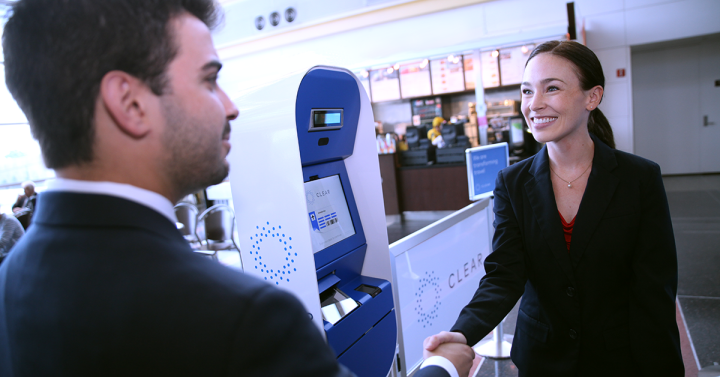
You can’t wait to get home for the holidays, and neither can the teeming hordes of people at the airport clogging up the security lines. With the TSA already woefully short staffed, making for some shockingly long lines at major airports across the United States, there has never been a more pressing need for a security solution in travel hubs. And luckily, Clear might be just that.
Branded as “the only service that enables members to move quickly and seamlessly through airport screening lines,” this 21st-century security offering uses advanced biometric scanning technology that turns your fingerprint and iris image into your ID. That means that in airports that have already implemented Clear, all you need is the touch of your finger to get through the identity screening line. And considering that nearly 50 million Americans are expected to take to the skies over Thanksgiving, anything that speeds up those airport lines is in high demand.
To be clear, Clear doesn’t replace any actual security measures, but it does replace the identification process during check in. Clear allows passengers to bypass the process of waiting on a representative to check IDs and boarding passes, instead simply scanning their finger or iris. After verifying members’ identities with a tap of a finger or blink of the eye, Clear members can proceed directly to bag scans and metal detectors. Clear has already been certified as a “qualified anti-terrorism technology” by the U.S. Department of Homeland Security, and to date, has been used more than five million times to move travelers through lines in an efficient manner.
You can sign up for Clear in less than five minutes, and even if you enroll just moments before you go to the airport, you’ll be able to use your new membership. Anyone who signs up at the airport is given a one-month free trail, and the service is currently available at the following airports (with more airports coming online in the coming months):
- Austin, TX (AUS)
- Baltimore, MD (BWI)
- Dallas/Fort Worth, TX (DFW)
- Denver, CO (DEN)
- Detroit, MI (DTW)
- Houston, TX – George Bush (IAH)
- Houston, TX – William Hobby (HOU)
- Las Vegas, NV (LAS)
- Miami, FL (MIA)
- Orlando, FL (MCO)
- San Antonio, TX (SAT)
- San Francisco, CA (SFO)
- San Jose, CA (SJC)
- Seattle, WA (SEA)
- Washington, DC – Dulles (IAD)
- Washington, DC – Ronald Reagan National (DCA)
- Westchester County, NY (HPN)


